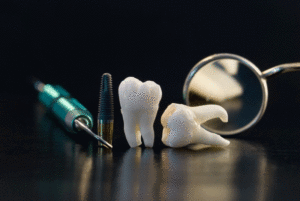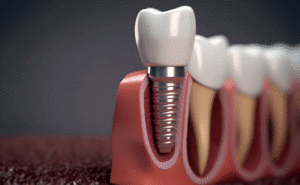Just think of it as cavity care without the drill.
That’s the basic concept behind air abrasion technology – it’s a drill-less technique that many dentists are beginning to use on young children and others who get anxious over the traditional cavity filling method. And, yes, it does work in treating tooth decay.
Air Abrasion 101
Specifically, air abrasion technology is like a miniature blaster that goes into the mouth and is deployed to blast away tooth decay. Just picture a fine, precise stream of particles – which are made from silica, baking soda or aluminum oxide – being blasted at tooth decay via an air or gas stream.
While it may seem questionable, the process is perfectly safe. None of the particles used to blast away tooth decay enter the mouth or can be swallowed thanks to a high-powered suction that’s also present in the mouth at the time of blasting. A protective fitting is also applied around the mouth to prevent the blast particles from irritating parts of the mouth other than the tooth decay. And finally, patients wear protective eyewear to prevent errant blast particles from striking them in sensitive places.
The Pros
As we told you in the opening, air abrasion technology is particularly useful on small children that may become fearful of a drill or on people who have a fear of visiting the dentist, specifically the sight or sound of the drill that’s typically used to restore teeth.
Here’s a look at some of the other advantages of abrasion technology when compared to the conventional method:
- There’s no heat, no sound, no pressure and no vibration.
- Unlike conventional cavity correcting methods, which may require anesthesia, air abrasion typically eliminates the necessity of any pain relievers for shallow cavities.
- Many dentists believe that air abrasion actually reduces the risk of fracturing or chipping the tooth – a big factor in overall tooth health.
- It’s a fast and easy process, allowing patients to get in, finished, and out sooner.
- Because the process is fast and easy, dentists can usually treat multiple locations in a patient’s mouth in one visit, eliminating return visits.
The Cons
While air abrasion is an effective, safe technology, it’s not without its disadvantages and it’s not a technology that’s applicable for use on every dental patient. Here’s a look at the drawbacks to air abrasion:
- Not for deep cavities: For deep cavities close to the tooth’s pulp, air abrasion is not recommended. As mentioned previously, the technology is best used for treating small, shallow cavities.
- Pain: Many people don’t like getting treated for cavities because it’s painful. Unfortunately, air abrasion doesn’t take the pain and discomfort out of the process in some situations, as the air and blast particles can still lead to some discomfort and sensitivity in patients.
- Not applicable for amalgam or silver fillings: Air abrasion is only applicable with composite based fillings. Why? It has to do with the properties of the blast material and how well composites adhere to the smooth surface that it creates.
Finally, another question that we receive is whether or not air abrasion is covered by insurance. And the answer is – it depends. Every insurance plan is different and while some have started to cover this type of treatment, others don’t.
For more information on air abrasion technology, whether or not your insurance covers it and whether or not you’re applicable for it, contact the dental office of Dr. Richard Caven today.


